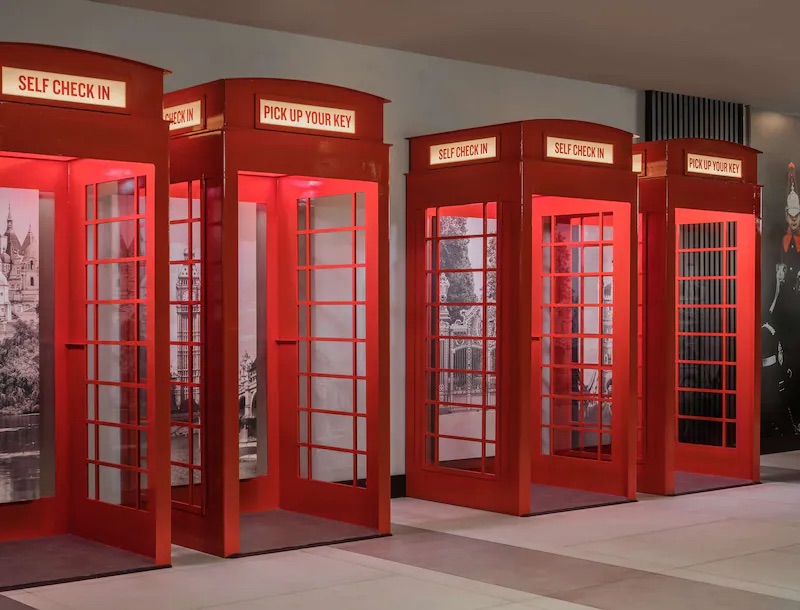Peter finally gets around to visiting Chichén Itzá, but will the Maya ruins measure up to the other six wonders of the world?
During our round-the-world trip in 2014-15, Kia and I visited Christ the Redeemer in Rio de Janeiro, Brazil. It was my sixth of the New 7 Wonders of the World, a 2007 campaign which selected the new world wonders from a list of 200 monuments. The final seven were chosen by the public who cast over 100 million votes in the process.
While we were pleased to see the statue, we were somewhat underwhelmed by the experience. Even though we visited on a beautiful, clear day in June – apparently a quiet period – we spent our time being jostled and pushed around on the viewing platform. It was not an enjoyable experience.

Furthermore, from an architectural perspective, Christ the Redeemer doesn’t really contend with the other wonders, all of which were built hundreds of years ago (thousands in some cases).
As such, I approached our visit to Chichén Itzá in Mexico’s Yucatán Peninsula somewhat cautiously. How would the Maya ruins measure up to the other world wonders? Would it wow us like the rose-red city of Petra or the iconic Inca citadel of Machu Picchu? Or would it be a flop like Rio’s statue?
What are the New Seven Wonders of the World?
The New7Wonders Foundation made headlines in 2007 when the results of “the largest poll on record” were announced at a glittering show at Lisbon’s Benfica stadium.
However, the poll was criticised as unscientific. Even though online voting was limited to one vote per online identity, casting multiple votes was possible via telephone. Brazil, in particular, ran huge country-wide campaigns encouraging residents to vote for Christ the Redeemer. Some estimates suggest that around 10 million Brazilians voted in the poll – 10% of the total votes cast!

On the contrary, countries without a large and well-connected population or sufficient funds – be it sponsorship or government support – could not run such high-impact campaigns.
Farouk Hosny, the Egyptian culture minister at the time, wrote to the director-general of UNESCO, saying the company behind the vote was “primarily aiming for profit” and that “the Seven Wonders should be chosen by a cultural institution, not the average man on the street.”
UNESCO – which has long had its own World Heritage List that identifies, protects and preserves sites of cultural and natural heritage considered to be of exceptional value to humanity – also criticised the organisation’s approach.
“The list of the 7 New Wonders of the World will be the result of a private undertaking, reflecting only the opinions of those with access to the internet and not the entire world. This initiative cannot, in any significant and sustainable manner, contribute to the preservation of sites elected by this public.”
– UNESCO
The Great Pyramid of Giza, the only one still standing from the original list of seven wonders compiled by Greek scholar Antipater of Sidon over 2,100 years ago, was named an ‘honorary wonder’.
| World Wonder | Location | Year |
|---|---|---|
| Great Pyramid of Giza* | Egypt | 2560 BC |
| Great Wall of China | China | 700 BC |
| Petra | Jordan | 312 BC |
| The Colosseum | Italy | 80 AD |
| Chichén Itzá | Mexico | 600 AD |
| Machu Picchu | Peru | 1450 AD |
| Taj Mahal | India | 1643 AD |
| Christ the Redeemer | Brazil | 1931 AD |
*honorary status
Visiting Chichén Itzá
The UNESCO-listed Chichén Itzá is the most famous, best restored and one of the most significant Maya sites of the Yucatán peninsula. When the Spanish arrived in the region in the 16th century, the city had already rapidly declined and was possibly even entirely abandoned (records are unclear).
But at its peak, from around 550 to 1200 AD, the city of Chichén Itzá, meaning ‘at the mouth of the well of the Itza’, was home to as many as 50,000 people. The Itza were an ethnic group of Maya who had risen to power in the northern part of the Yucatán peninsula. Occupying an area of nearly 10km2, the city was the centre of political and economic power in the region and one of the largest cities in the Maya world.

Shortly after passing through the entry gates, El Castillo (The Castle), a 25m-high pyramid initially built around 800 AD, rises abruptly from the surroundings.
El Castillo is also known as the Temple of Kukulcán, named after the Maya deity that appears as a feathered serpent. The pyramid is the site’s centrepiece and would alone earn a place on any list of world wonders. Rising from a grassy plaza, the symmetry of the edifice is striking. It’s what the lines represent, however, that truly makes this structure so impressive.
The Maya developed some of the world’s most accurate pre-telescope astronomy and much of what you see at Chichén Itzá is related to time and the study of its passage. The 365 steps of El Castillo represent the number of days in a year and the structure is formed of nine levels, divided in half by a staircase, making 18 separate terraces. These represent the 18 20-day months of the Maya calendar. On each facade of the pyramid are 52 flat panels, reflecting the 52 years in the Maya calendar.

During the spring and autumn equinoxes, near sunset, the serpents’ heads at the bottom of the main staircases are joined to their tails (at the top of the pyramid) by a long waving shadow. The biannual event, known as the descent of the serpent, draws thousands of spectators and worshippers and is re-created nightly in the light and sound show.
However, what you see of Kukulcán today is actually a second temple built over the first one. In 2015, researchers discovered that beneath the pyramid is a 20m-deep subterranean cavity, mostly like a cenote. It was the existence of this freshwater that likely drew the Maya to the area in the first place.

Beyond Kukulcán, there are several noteworthy sites including an observatory and cenote as well as the Gran Juego de Pelota (Great Ball Court), famous for acoustics. Here, it’s possible to have a conversation with someone standing at the other end of the 135m-long wall. To this day, the acoustics remain a mystery.
Well, Chichén Itzá certainly wasn’t a flop. It deserves a place on any bucket list – new, ancient or otherwise. Because there is a certain allure to ancient ruins such as these. For the 2014 Ruin Lust exhibition at the Tate Britain, curator Brian Dillon explained that “ruins are attractive because they’re not just things that have survived, but they also point towards something.”
For me, this isn’t something that can be emulated today. Perhaps, if in 500, 1,000, or 2,000 years, Christ the Redeemer is still standing, it will truly be a world wonder. But for now, whether they are dusty rose-red facades hewn from sandstone cliffs in the desert or crumbling shrines held in the vice-like grip of Tomb Raider trees, there is something about the ancient world that modern architecture simply cannot match. No matter how many votes are cast.
What not to miss
- El Castillo (The Castle)/Kukulcán: the iconic pyramid and main site.
- Gran Juego de Pelota (Great Ball Court): the huge open-air court famed for its acoustics.
- Grupo de las Mil Columnas (Group of 1,000 Columns): pillars surrounding the temples adorned with elaborate carvings.
- Templo de los Guerreros (Temple of the Warriors): ornate depictions of the revered jaguars and eagles in the temple’s friezes.
- Cenote Sagrado (Sacred Cenote): a limestone sinkhole which has revealed hundreds of artefacts including the bones of sacrificial victims forced to jump into the ‘entrance to the underworld’.
- El Caracol (The Snail): the domed circular observatory where priests announced rituals and celebrations to be observed.

Tips for visiting Chichén Itzá
- Arrive as early as possible to beat the crowds (the site opens at 8am; tour buses arrive en masse from 11am).
- Visit on a weekday and avoid Sundays and national holidays.
- Head straight for El Castillo, the main site, to see it while it’s still relatively empty.
- Dedicate at least two hours to exploring all the sites.
- Take snacks or eat offsite in Pisté. The onsite food is overpriced.
- The entrance fee is $571 MXN ($30 USD); credit cards are accepted but we advise taking cash (pesos) all the same.
- Pack a sun hat, sunscreen, mosquito repellent and lots of water.
- Remember Chichén Itzá is the name of the site; the nearest town is Pisté.
- For more information visit chichenitza.com.
- For a more in-depth visit consider hiring a guide, or joining a private tour to skip the queues.

Visiting Chichén Itzá: the essentials
What: Visiting Chichén Itzá in Mexico, one of the New Seven Wonders of the World.
Where: We stayed at the Hotel Mesón del Marqués in Valladolid. Set in the grounds of a gorgeous colonial-era 17th-century house, the hotel is located right on the main square with views of Iglesia de San Servacio, the imposing Catholic church at the heart of Valladolid. The hotel has large, cool rooms with an on-site restaurant and rooftop bar, but its main selling point is the pretty central garden where meals are served.
Small, quiet and pastel-hued Valladolid is perfect to use as a hub for visiting Chichén Itzá – just 45 minutes away by car – as well as Río Lagartos (1.5 hours) and several cenotes including Suytun and Oxmán.
When: Chichén Itzá is one of Mexico’s most popular sites so expect crowds all year round. That said, the busiest time is during peak season from November to April when the weather is at its best. The rainy season begins in June and lasts until October. May or October are the shoulder periods and will be less busy.
How: We hired a car at Cancún Airport via Avis and drove between the main sites in Yucatán. Driving in the region is fairly straightforward with traffic fairly manageable outside of the city centres. It is a 2.5-hour drive from Cancún Airport to Valladolid.
There are buses running between the major towns, cities and hubs in Yucatán, including Chichén Itzá, Valladolid and Cancún. Book tickets at Ado.com.mx.
At London Heathrow, we had a super early flight, so booked a night at Radisson RED London Heathrow, just a 5-minute drive from terminals two and three. The trendy hotel boasts a fabulous bar and restaurant as well as a relaxed lounge area, while the rooms are large, comfortable, stylish and most important of all, quiet. We left at 4am and were past security less than 30 minutes later – perfect for a late night or early start.
We flew to Cancún from London via Amsterdam with KLM, although several international airlines fly there via a range of routes. Book through skyscanner.net for the best prices.
Enjoyed this post? pin it for later…

Lead image: Atlas & Boots
Autor: Peter
Fuente de contenido


